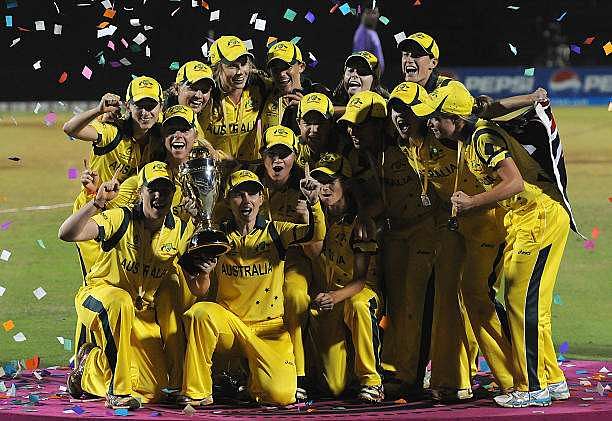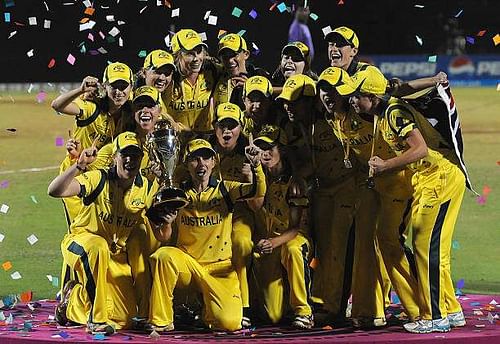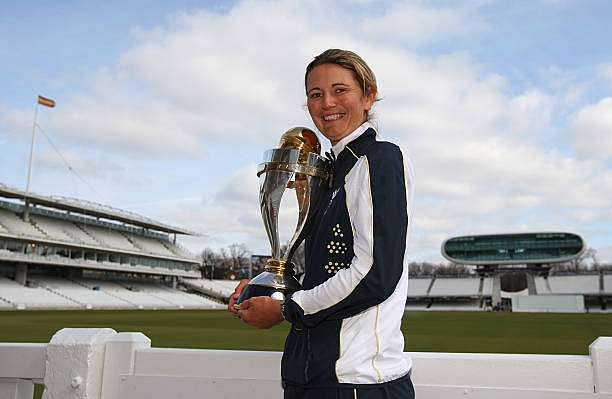
ICC Women's World Cup: Origin of the tournament and the current champions
The most illustrious tournament in the history of women’s cricket is underway as the eleventh edition of the ICC Women's World Cup started with the hosts England locking horns with India in the inaugural match of the competition at the Country Ground in Derby. The hosts were thoroughly beaten by the Asian side and will hope to bounce back.
The iconic Women’s World Cup is the most awaited tournament in the women’s circuit, and away from the glaring eyes of the media, the top eight sides in the world compete for the coveted trophy.
However, things are slightly different this time around as the competition has been surrounded with plenty of fanfare and is touted to be one of the turning points in the history of the game for the women’s team.
With a sole aim to get this prestigious event at par with their male counterparts, the ICC has announced a hike in the prize money of the teams, as they will now receive two million dollars, approximately tenfold increase in the money from the previous event.
Also, with the inclusion of Decision Review System for the first time in the mega event, the women’s cricket has evolved over the years and undergone massive changes ever since its inception in the year 1973.
Origin of the Tournament
The year of 1973 marked the beginning of a glorious era in the history of women’s cricket as the prestigious tournament was staged for the first time in England under the guidance of the International Women's Cricket Council.
The inaugural event was scheduled to be round robin format for the teams, and the last match of the competition was between the hosts, England, and Australia at Birmingham. The two formidable sides in the women’s game locked horns for the final match with Australia having won four league matches and one game being abandoned while England went into the game with four wins and one loss to New Zealand in the league games.
The two teams were the entering the final league match placed first and second in the points table with the Australian team leading by a solitary point. The game proved to be a one-sided affair as the hosts cantered to a 92-run victory in the summit clash to win the first Women's World Cup. Ironically, this showpiece event was organised two years prior to the inception of the men’s World Cup.
However, the participation of the teams in the subsequent World Cups was severely hampered due to the lack of funds by the cricket boards.
ICC taking over the Women’s Cricket
One of the biggest changes in the Women’s Cricket happened in early 2005 when the International Cricket Council undertook the functioning of the Women’s Cricket under its wings. Ever since then, the World Cup has been staged every four years, and the players have benefited from the best of facilities and grounds on offer for the competition.
In the year 2005, the first ever ICC Women’s World Cup was held in South Africa with the tournament favourites, Australia taking on India in the summit clash. Despite making it to the final after some strong performances, the Indian team wilted under pressure, resulting in the strong Australian unit winning the match comprehensively by 98 runs.
The 2009 edition of the tournament was another huge success for the women’s cricket as the competition ensured plenty of entertainment to the fans with some fiercely contested battles. With Australia hosting the prestigious event, the players witnessed plenty of support from the Aussie crowd as they fought hard for the title.
Although the hosts were knocked out of the competition, the final of the contest proved to be an exciting affair as England edged past New Zealand by four wickets in a low-scoring encounter.
Also read: ICC Women's World Cup: Five players who might be featuring in their last World Cup
India hosted the last edition of the Women's World Cup with the majority of the matches being played at the Brabourne Stadium in Mumbai. The pressure of playing on the home soil resulted in a dismal performance by the Indian team and was eventually knocked out of the competition in the league stages. However, the tournament sprung plenty of surprises as favourites, England, lost to Sri Lanka while the West Indies defeated the eventual champions Australia in the group stages of the event.
Unfortunately, the final of the tournament turned out to be a one-sided affair as the Australia dominated the proceedings from the start of the match and thumped the West Indian outfit by 114 runs in the summit clash. The victory meant that the Aussies lifted the World Cup for a record six times.
Pinnacle of the Women's Cricket
The eleventh edition of the Women’s World Cup in England is the pinnacle in the history of the game as the final of the tournament will be staged at the Mecca of Cricket, Lords. The high voltage competition will be contested in the single league format with all the teams competing against one another.
The top four sides in the points table after the league phase will progress to the semi-finals of the event while the deciding game of the championship will be held at the Home of Cricket on 23rd July 2017.
With an increase in the match fees and the coverage for the competition, this event will ensure that the women players get their much-awaited dues and credit for years of hard work in improving the standard of the Women's team.

